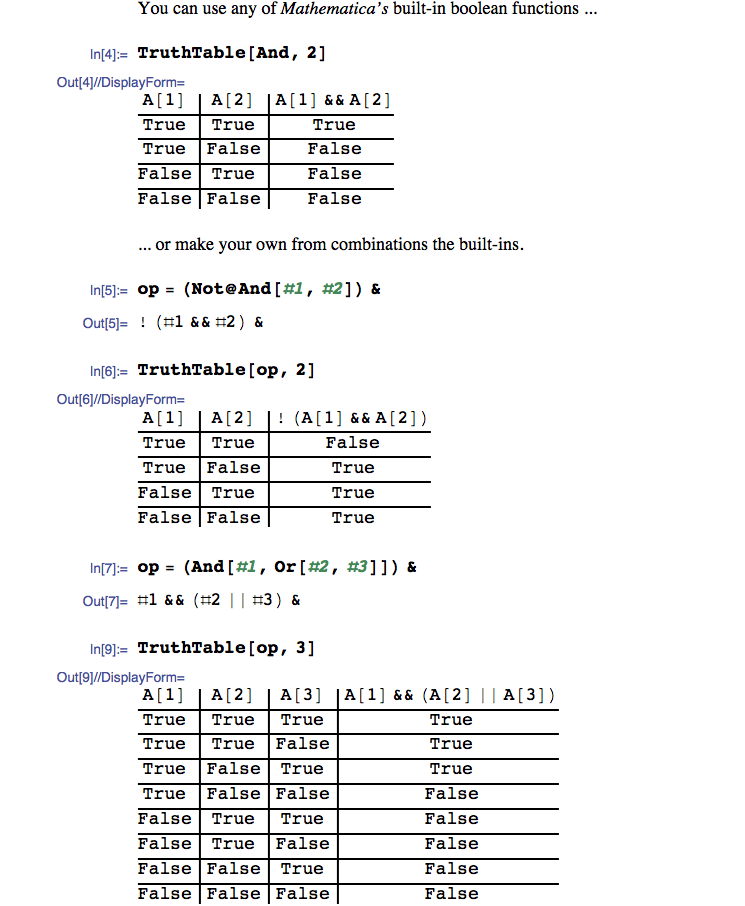I am very new to Mathematica, and need to know how to plug values into existing functions. For example, Math World supplies the following code for building a truth table of n levels of operator op:
TruthTable[op_, n_] :=
Module[{l =
Flatten[Outer[List, Sequence @@ Table[{True, False}, {n}]],
n - 1], a = Array[A, n]},
DisplayForm[
GridBox[Prepend[Append[#, op @@ #] & /@ l, Append[a, op @@ a]],
RowLines -> True, ColumnLines -> True]]]
How do I set the operator and the value of n?


BooleanTable[]already? $\endgroup$